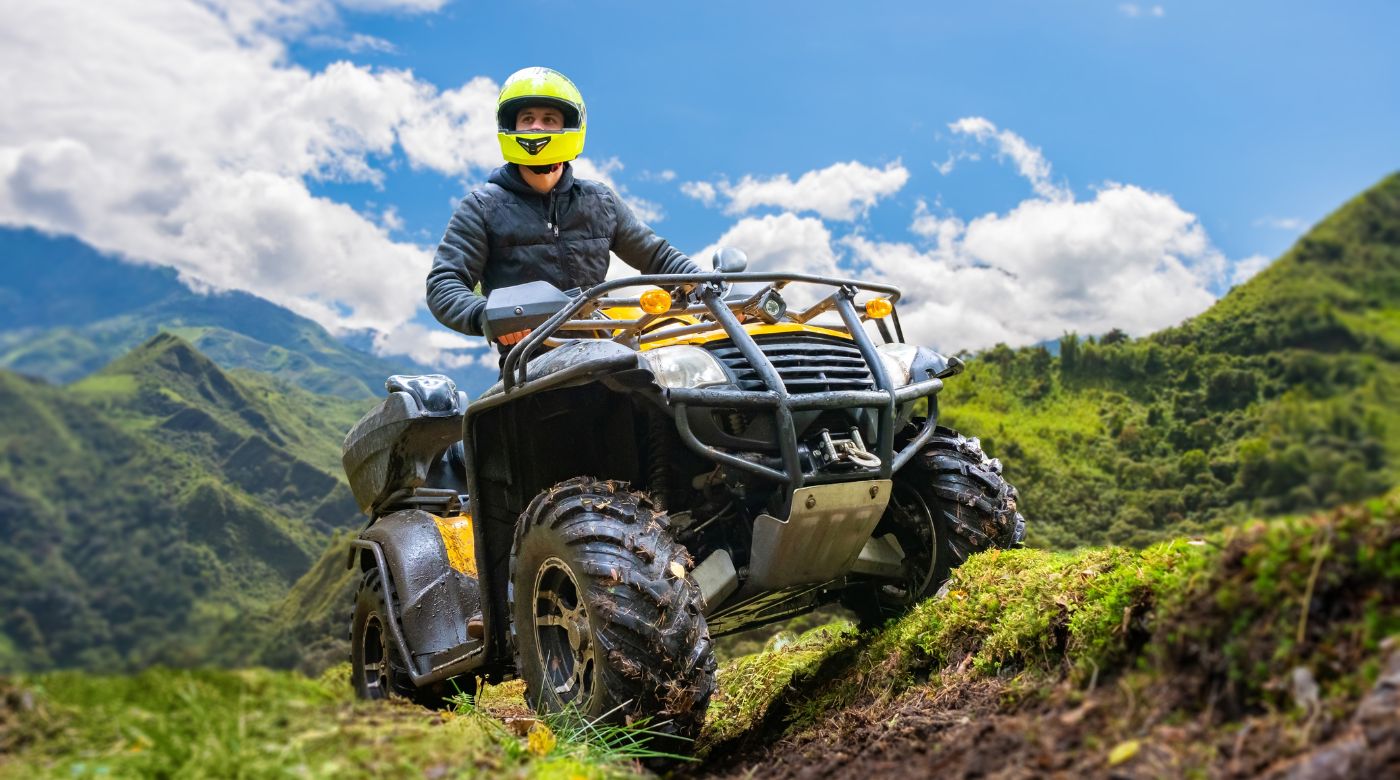Every second counts when you’re racing downhill. Riders often falsely assume that climbing hills is more challenging than descending. Gravity can work to your advantage, giving your legs a break on the way down, but your speed can quickly get away from you, which leaves less time for avoiding obstacles. Use this downhill mountain bike racing guide to reach the bottom in record time.
What Is Downhill Mountain Bike Racing?
Downhill mountain bike racing is a particular sect of the sport where riders compete on timed trails as they descend. The high-speed course usually starts on an elevated peak and winds down toward the finish line. The participants gather in a line and start when the whistler gives the signal. The rider who completes the trail the fastest wins, usually by a few tenths of a second. Passholders often gather around the gated-off trail to watch the action.
Most riders reach 30 to 40 mph on moderate trails, with Max Stöckl holding the world record at 104 mph. Enduro racing involves riding over rugged off-road terrain, often with steep hills and descents.
Equipment for Downhill Mountain Bike Racing
Downhill biking increases your speed, which can increase the risk of accidents. Steep descents put you above the front tire, which could flip you over the handlebars in a collision. Make sure you’re ready for the races with this essential gear.
Downhill Mountain Bikes
You need a mountain bike that can handle the steep intensity of a downhill trail. Traditional mountain bikes can handle rugged hills, but if you’re serious about winning, consider upgrading to a downhill mountain bike from a reputable bike shop to get a model with slacker head angles, reinforced disc brakes and robust suspensions to reduce vibrations. Downhill bikes can be regular or electric. E-bikes give your legs a break so you can save your strength for the next ascent.
Keeping the head angle around 62 degrees makes the bike more stable. The suspension forks should be 200 mm or more with 40 mm stanchions. Use coil shocks instead of air shocks to increase dampening. It should have fewer gears than your average mountain bike, usually seven versus 12. The brakes have rotors up to 220 mm and four-piston calipers to help you stop on a dime.
Bike rentals can limit your selection. Find a vendor who carries equipment designed for the terrain.
Downhill Riding Gear
Use durable protective safety gear to insulate yourself from scrapes and falls. Steep descents can send you over the handlebars, which can make for a rough landing.
Wear a full-face helmet with a visor to shield your head from injury, block the glare and keep the debris out of your eyes. Add knee, shoulder and elbow pads to your riding ensemble for extra fall resistance. With the right gear, you should be able to get up and keep pedaling after a fall.
Riding in pairs will help you learn the tricks of the trail, but you can’t look away from the path or take your hands off the handlebars. Use wireless bike helmets to communicate wirelessly with your companion so you can share tips, alert each other to potential obstacles and find the path of least resistance without putting yourselves at risk.

Source: anatoliy_gleb/Shutterstock.com
The Cardo Packtalk Outdoor fits seamlessly onto your full-face helmet to keep you in the zone. Use this device to control the headset with voice activation. It automatically connects in range using Dynamic Mesh and Bluetooth technology, so you don’t have to touch the device while riding. Just mount it and ride to communicate hands-free.
Preparing for Your First Downhill Mountain Bike Race
Before you hit the trail, inspect your gear to ensure it’s ready for the ride. Lubricate the gears on your bike and check the brake pads to ensure they’re at least half an inch thick. Get plenty of rest the night before, eat a balanced breakfast with lean protein and complex carbohydrates and stay hydrated but limit your intake right before the race to avoid riding with a full bladder.
Consider taking the chairlift to the top instead of riding up the mountain to conserve energy. Check if the bike park offers this option and buy your lift tickets beforehand.
Choose a downhill track with minimal obstacles for your first descent and gradually increase the intensity based on your skill level. Avoid rock gardens and areas with winding trails to keep a straight line. Count the number of jump lines and mark them on the trail map to find an alternative route.
Downhill Mountain Biking Tips
Start by mastering lower-grade hills to get a feel for downhill racing before taking on more challenging courses. Practice taking jumps to increase your descent time. Sticking the landing can shave precious seconds off your record. If you encounter a significant jump your first time on the trail, consider going around until you feel comfortable getting air.
Relax and keep your limbs loose to respond quickly to variations in the terrain. When starting, lean back with your spine straight to avoid going over the handlebars. Leaning forward can increase your time, but it’s easy to overdo it.
Use your arms to absorb the vibrations of the road while maintaining a firm grip. A sudden twist or bump could throw off your balance, so do your best to keep the bike centered and stable using your hands and thighs for support. Feel where the bike is trying to go and let gravity guide you. Keep these additional downhill mountain biking tips in mind to build the skills it takes to win a race.
Avoid going through mud and stay off the trail after a heavy rainstorm. The extra moisture can gunk up your brakes and make it difficult to grip the handlebars. Check trail conditions before getting your bike to the top.
Master the Art of Downhill Mountain Biking

Source: Kuznetcov_Konstantin/Shutterstock.com
Practice makes perfect. The more you run the trail, the more your time will improve. Use the proper downhill riding equipment to get to the bottom quickly and safely. Start slow when descending and gradually work up to steeper trails to challenge your skills. After a few months or years, you’ll be the first to cross the finish line.
Try the Cardo Packtalk Outdoor Today



